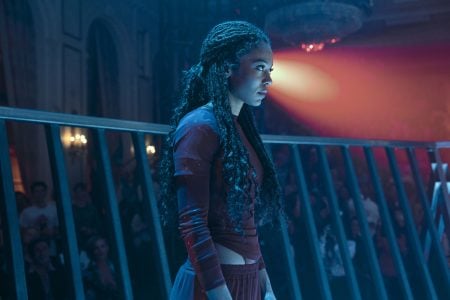If you grew up in the ‘80s and ‘90s, you likely know Mavis Beacon.
In truth, there are two entities with that name. The computer software Mavis Beacon Teaches Typing prepared multiple generations for the impending internet age, where everyone would conduct every part of their lives in front of a computer screen. And then, there is the face of said best-selling software, a Black woman whose bright smile covered millions of CD cases. At first glance, the two are inextricable from each other. With a name like Mavis Beacon, which projects authority and intelligence, perhaps a digitized librarian, the assumption is that the woman on the software box is real. For millions of people who picked up that box in their local Circuit City, Mavis Beacon would teach them the skills that would help them navigate the rest of their lives.
There is another, more personal component. Regardless of whether or not Mavis Beacon was real, she was a Black woman on the cover of the world’s best-selling educational software. She represented intelligence, even the future, at the cusp of the biggest societal sea change. Mavis Beacon was a powerful counterpoint in a world starved of positive representations of Black people. Mavis Beacon, real or fiction, was a beacon for Black women.

It is this potent connection that the documentary Seeking Mavis Beacon, which premiered at the 2024 Sundance Film Festival, examines through a nationwide search for the mysterious Beacon. Jazmin Renée Jones and Olivia McKayla are the detectives on the case. Their reasons are clear and deeply emotionally grounded. They wanted to give Mavis Beacon, or rather Renee, the Haitian woman who lent her likeness to Mavis Beacon, her flowers. Apart from the thrill of finding a woman who has disappeared from public view since becoming Mavis Beacon, both women feel a kinship with their Mavis, inspired by her to pursue their technological ambitions. More than anything, finding her is an opportunity to say “thank you.” And so, Jones and McKayla embark on their project, meticulously and joyously researching every aspect of the Mavis Beacon universe to find her.
The blend of respectful deference and joie de vivre permeates every frame of the documentary, from its archival footage to its narrative structure. Jones frames the documentary around an active desktop computer, clicking into folders and files that open videos reflecting the past and present culture surrounding Mavis Beacon. It’s an inventive approach that allows for the gleeful mishmash of generational, cultural touchstones, from clips of Oprah Winfrey to the iconic meme of the girl dancing in an Apple Store. Jones’s framing device brings self-aware humor, cleverness, and astute cultural commentary together in a charming, entertaining, and accessible package. It encourages the audiences to fully absorb the cultural impact of Mavis Beacon and have a blast doing it, especially with Jones and McKayla as our guides.

Jones and McKayla’s investigation into Mavis Beacon’s true identity is rich in research and intentionality. The two women are deeply spiritual individuals, and Jones weaves their intersectional, community-led practices throughout the narrative. There is a palpable sense of community grounded in Black, queer youth spaces, and you can feel how it sustains Jones and McKayla throughout their journey. Those spiritual moments, like the consultation of a spiritual conduit for guidance as they get closer to finding Renee, also grant them space to explore the tricky ethics involved. As passionate and thoughtful as they are about this project, Jones and McKayla keep the reality they are encroaching on someone’s private life at the top of their minds. They are honest (and self-effacing, with McKayla referring to her “stalker skills” more than once) about the nature of their project and set clear boundaries on the lines they aren’t willing to cross.
Jones turns their reconciliation into a broader examination of incredibly relevant digital identity and consent issues. More beneficial to the discourse than potentially finding and meeting Renee is how her image was commoditized and altered without her approval or consideration. There is the fact that, despite selling over 6 million copies by 1999 and generating millions of dollars in revenue, “Mavis” was only paid $500. When the software marketers altered her face on a later edition without consulting her, she sued and demanded the image be removed. They acquiesced by choosing another model to be Mavis, deeming Renee as disposable and replaceable. The lack of agency that anyone can have in the digital era is always disturbing, but Jones further emphasizes its urgency through the lens of Black womanhood.

So, did Jones and McKayla accomplish their goal and successfully seek Mavis Beacon? The young women would likely tell you whether they did is mostly irrelevant. The documentary accomplishes Jones and McKayla’s initial purpose: to give Mavis Beacon, the real person and the identity, her flowers. Jones’s innovative film directly links Mavis to a cultural revolution that we will spend the rest of our lives grappling with and celebrates her role in teaching millions how to interact with the digital sphere. Seeking Mavis Beacon reinforces the undeniable truth that a Black woman helped change the world. That is an infinitely more satisfying conclusion than finding someone who doesn’t want to be found.
Seeking Mavis Beacon had its World Premiere in the NEXT section of the 2024 Sundance Film Festival.
Director: Jazmin Renée Jones
Writer: Jazmin Renée Jones
Rated: NR
Runtime: 102m
Seeking Mavis Beacon reinforces the undeniable truth that a Black woman helped change the world. That is an infinitely more satisfying conclusion than finding someone who doesn’t want to be found.
-
GVN Rating 9
-
User Ratings (0 Votes)
0
A late-stage millennial lover of most things related to pop culture. Becomes irrationally irritated by Oscar predictions that don’t come true.



![‘Bugonia’ Review – Lanthimos Shoots For Brilliance With Emma Stone & Jesse Plemons In A Madcap World Gone Wrong [Telluride 2025] ‘Bugonia’ Review – Lanthimos Shoots For Brilliance With Emma Stone & Jesse Plemons In A Madcap World Gone Wrong [Telluride 2025]](https://cdn.geekvibesnation.com/wp-media-folder-geek-vibes-nation/wp-content/uploads/2025/09/Emma_Stone_Bugonia-300x169.avif)

